The sun, being the primary source of light for much of photography and being much larger than the earth, creates shadows wherever the photographer or the subject may be. To borrow the title of a C. S. Lewis book, the earth is a “shadowlands” and anyone aspiring to become a good photographer, must always be on the lookout for interesting shadows. And following Fox Talbot’s definition of photography, photographers must become “shadow masters.”
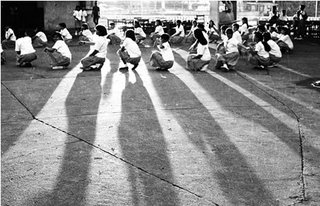
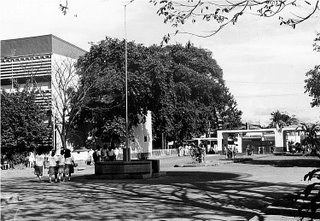 Kinds of shadows: cast or contained
Kinds of shadows: cast or containedCast shadows are created on a separate subject, not on the main subject itself (like in the picture below of the shadows of the trash can and the three students passing by it).
 Contained shadows, on the other hand, are inside the boundaries of the subject. Most of the time, there are cast and contained shadows interplaying with one another (as in the picture below).
Contained shadows, on the other hand, are inside the boundaries of the subject. Most of the time, there are cast and contained shadows interplaying with one another (as in the picture below).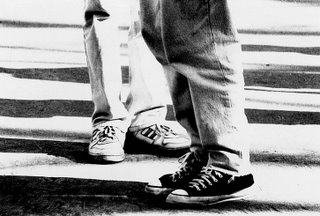 Creating a sense of mystery or intrigue with shadows
Creating a sense of mystery or intrigue with shadowsTo create mystery or intrigue, you can exclude the object forming a cast shadow; the shadow itself becomes the main subject. The picture below is a cropped portion of the picture above of the shadow of the trees falling upon the flagpole.
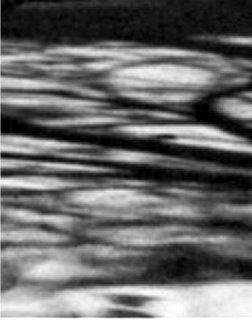
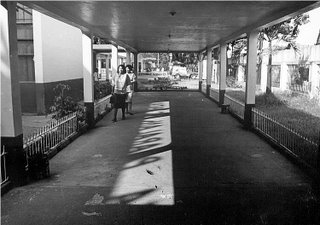 At first glance, the picture above seem to be out of place here since it looks like it’s an illustration for a lesson on converging verticals or vanishing points. Notice however, that on the cement floor, you’ll find a shadow which spells out the word “paaralan.” Our school’s main building has huge stone markers on the roof spelling out “Mataas na Paaralan ng Rizal” and every day at around 2:30 in the afternoon, the sun would cast the shadows of these markers on the floor below. As the sun sets down, these shadows disappear, only to return again the next day.
At first glance, the picture above seem to be out of place here since it looks like it’s an illustration for a lesson on converging verticals or vanishing points. Notice however, that on the cement floor, you’ll find a shadow which spells out the word “paaralan.” Our school’s main building has huge stone markers on the roof spelling out “Mataas na Paaralan ng Rizal” and every day at around 2:30 in the afternoon, the sun would cast the shadows of these markers on the floor below. As the sun sets down, these shadows disappear, only to return again the next day.Remember that opening scene in the classic movie “Rebel Without a Cause” starring James Dean, Natalie Wood and Sal Mineo? This movie, by the way, was the inspiration for the “Rush, Rush” video of Paula Abdul and Keanu Reeves many, many years ago. James Dean got into trouble with his classmates on the first day of classes when he stepped unintentionally on the school marker.
I taught in Rizal High School from 1984 up to 1995. Every afternoon when I would see that “paaralan” shadow and students stepping on that shadow without even noticing it, I would have the urge to grab these students, hold them up by the collar, and scream at them, “Who do you think you are? James Dean?” But I would probably have gotten into trouble if I did, and so I just kept these things to myself ...
As a creative photographer, you’ve got to see photo opportunities other people miss
What’s my point? Well, one, as a creative photographer, you’ve got to see photo opportunities where other people might simply see insubstantial, ephemeral shadows on concrete floors.
Two, watch classic movies (no, “Takot Ako sa Darling Ko” starring Joey de Leon and Jenny Syquia isn’t a classic) and good music videos (like the oldie “When You’re Gone” by The Cranberries with its creative use of flare, sidelighting, and its haunting setting - the Dachau concentration camp where thousands of Jews were exterminated during World War II by the Nazis). Photography is all about images and what better way to learn about images than from movies and music videos? But choose only those music videos with a positive viewpoint and general patronage imagery, okay?
I don’t know why but a lot of photographers do not like having their pictures taken. Well, one way a photographer can be present in a picture without being obtrusive or too obvious is to include his or her shadow in the photograph (needless to say, the light source must be behind the photographer to achieve this kind of effect).

No comments:
Post a Comment